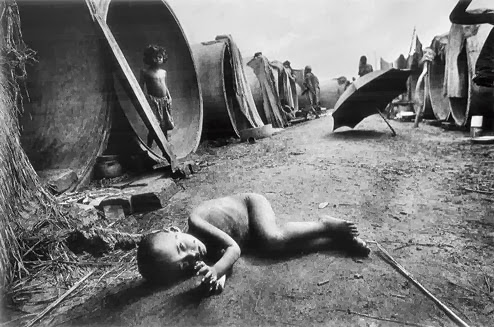Raghu Rai: His life and Masterpieces
Raghu Rai (born 1942) is an Indian photographer and photojournalist. He was a protégé of Henri Cartier-Bresson, who appointed Rai, then a young photojournalist, to Magnum Photos in 1977, which he co-founded.
Rai became a photographer in 1965, and a year later joined the staff of The Statesman, a New Delhi publication. In 1976, he left the paper and became a freelance photographer. From 1982 until 1992, Rai was the director of photography for India Today.He has served on the jury for World Press Photo from 1990 to 1997.He is known for his books, Raghu Rai's India: Reflections in Colour and Reflections in Black and White.
Raghu Rai was born in the village of Jhang, Punjab, British India (now in Pakistan).
Career
Rai began photography in 1965, and the following year joined "The Statesman" newspaper as its chief photographer.[citation needed]
Rai left "The Statesman" in 1976 to work as picture editor for
"Sunday," a weekly news magazine published in Calcutta. Impressed by an
exhibit of his work in Paris in 1971, Henri Cartier-Bresson nominated Rai to join Magnum Photos in 1977.
Rai left "Sunday" in 1980 and worked as Picture Editor/Visualizer/Photographer of "India Today"
during its formative years. From 1982 to 1991, he worked on special
issues and designs, contributing picture essays on social, political and
cultural themes. Rai has specialized in extensive coverage of India. He has produced more than 18 books, including Raghu Rai’s Delhi, The Sikhs, Calcutta, Khajuraho, Taj Mahal, Tibet in Exile, India, and Mother Teresa. His photo essays have appeared in many magazines and newspapers including Time, Life, GEO, The New York Times, Sunday Times, Newsweek, The Independent, and the New Yorker.
For Greenpeace, he has completed an in-depth documentary project on the chemical disaster at Bhopal in 1984, which he covered as a journalist with India Today in 1984, and on its ongoing effects on the lives of gas victims.[citation needed] This work resulted in a book, Exposure: A Corporate Crime and three exhibitions that toured Europe, America, India and southeast Asia after 2004, the 20th anniversary of the disaster. Rai wanted the exhibition to support the many survivors through creating greater awareness, both about the tragedy, and about the victims – many who are still uncompensated – who continue to live in the contaminated environment around Bhopal.[6]
He has served three times on the jury of the World Press Photo and twice on the jury of UNESCO's International Photo Contest.
 | |

Photo Credit : Raghu Rai and Magnum






































0 comments: